Preparing tomorrow’s print service providers
by carly_mchugh | 10 February 2023 9:52 am
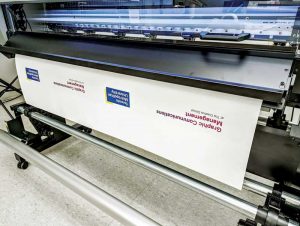 [1]
[1]While the name of the school has changed, the Graphic Communications Management program at Toronto Metropolitan University continues to lead innovation in the field of print and packaging. Photos courtesy Toronto Metropolitan University
By Ginny Mumm
Educating the next generation of printing professionals has long been a specialty at Toronto Metropolitan University (formerly Ryerson), a public research university in the city’s downtown core. In fact, the school offers the only four-year, degree-granting program for the printing industries in Canada.
To learn more about this academic opportunity, we spoke with Natalia Lumby, interim chair for the School of Graphic Communications Management (GCM), along with Darsan Sivanantharajah, the university’s client support technician. They discussed the defining qualities of the program, as well as how their faculty ensures the wide-format digital printing curriculum, available print technology, and experiential learning opportunities are in sync with printing market trends, so graduates are well prepared for their future careers.
In the transition to Toronto Metropolitan University, has anything changed about your program?
Natalia Lumby (NL): The School of Graphic Communications Management has enjoyed decades of success, during which the institution has been renamed several times. We used to be a polytechnic. The new university name represents one of the recommendations made by the Standing Strong Task Force, which consulted thousands of community members. It’s an important step towards decolonizing education. Our faculty also has a new name. We’re proud to be one of the nine schools at The Creative School. GCM is part of an ecosystem that leads innovation in key creative media disciplines, with our area of expertise being print and packaging.
How many students graduate from your program each year? How large is your faculty?
NL: We have a total of 800 students in our four-year program, or about 200 students in each year. Our program is delivered by 25 faculty members, consisting of passionate teachers, researchers, and industry professionals.
Has enrollment in your program changed over the years?
NL: Our program enrollment has continued to grow. However, we’re now holding steady, simply due to space limitations. We want to ensure each of our students gets the opportunity to access our hands-on curriculum. To make that happen, we would need more technology labs (or hours in the day) which is no small feat, as we are located in the heart of downtown Toronto.
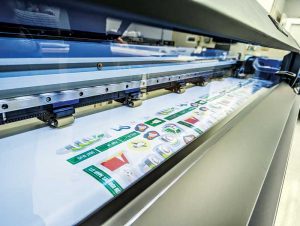 [2]
[2]Using the latest wide-format printers, students practice printing stickers, signage, and window graphics on a variety of media.
Your program is known for being experiential. Why do you believe this type of learning is important for your students?
NL: Our program is interdisciplinary, and our ethos is our students should be exposed to as many aspects of the industry as possible, so they can become effective graphic communications managers. To make sure our students understand what printing a physical, tactile graphic involves, we teach them about design, workflow, production, finishing, and installation. We believe it’s extremely important for our students to get access to modern printing equipment and use it to produce their own work, from idea to finished product.
How do you teach students about wide-format digital printing practices?
NL: We use the same format we use to teach other printing technologies. We incorporate large lectures with up to 200 students to convey general information, followed by smaller, hands-on lab sessions with groups of 25 to 30 students.
For example, we teach a class in which students learn about file preparation for decals that require unique dielines. We use a 1371.6-mm (54-in.) Roland DG TrueVIS VG3-540 printer/cutter for the class, to demonstrate colour output and print-and-cut workflow.
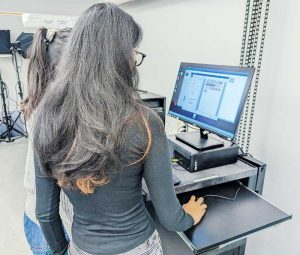 [3]
[3]The curriculum incorporates large lectures, followed by smaller, hands-on lab sessions with groups of 25 to 30 students.
What are some of the other key components of your interdisciplinary program?
NL: One of the important components of our program is the opportunity for students to apply for paid corporate internships. In their third year, they can interview with companies from across Canada at our Career Fair. To facilitate as many opportunities as possible, we arrange a series of 12-minute interviews—similar to a “speed dating” situation. The support we have from our industry is really felt that day. The space is always full of energy. It’s a really fun day.
Many of our students receive offers for permanent employment from the firms they intern with. A few choose to do international internships in locations like Singapore or Australia. In addition to internships, we offer student exchanges with partners in countries all over the world, including South Korea, England, and Germany.
What features of your printing equipment are the most impactful?
Darsan Sivanantharajah (DS): The expanded colour gamut is a game changer compared to earlier technology. We are using CMYKLcLmOrGr inks, which fit our needs both in classrooms and with our faculty research goals. This ink setup also produces the ideal grey balance.
The media clamps have eliminated paper curls, the LED lights give access to verifying print quality while in production, and the ink cartridges on the front allow us to quickly determine the gamut, as well as swap cartridges for continuous production.
From a maintenance point of view, details such as LED lights to clean the undercarriage of the printheads are useful. Media loading and unloading is easy, and the liquid crystal display (LCD) control helps students to determine what media is loaded in the machine.
Overall, new technology is allowing our instructors to re-evaluate course design to increase student interaction with the equipment, which in turn allows them to gain a deeper understanding of what is possible with the combination of equipment in our labs.
Which wide-format applications are you teaching your students to print?
NL: We teach all of our first-year students to design decals, and then print and cut them. We’ve also done workshops where we’ve printed vinyl for Christmas ornaments, water bottles, and other fun applications. When we have new students who may be bright-eyed and bushy-tailed but are not really sure yet whether graphic communications management is the right choice, having them design and print their own stickers they can then apply on the back of their smartphones does wonders.
We also use our printer/cutter for the Sign and Display course, where students are taught to design, produce, and install window and floor graphics. We haven’t tackled vehicle graphics yet, but we have everything we need to begin doing so. In the next few months, I’m going to wrap my car to get us started on it.
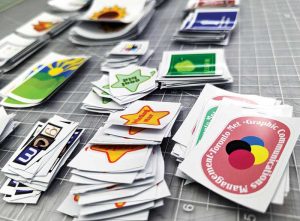 [4]
[4]Throughout the program, students learn every step in the production process and create designs to demonstrate the expanded color gamut of the printing equipment.
What types of media are you printing on?
NL: We love to experiment with different media. We’re not a production environment, so we love to play. We run test prints to compare how designs look on one material versus another. We use heat transfer vinyl to show students how to print T-shirt designs. We also use our printer/cutter to release a variety of colour profiles to the machine and see how each one prints.
DS: We offer our students a variety of media to explore the production capabilities of large-format printers: glossy and matte photo paper, white and clear vinyl for both floors and windows/walled surfaces, and even perforated vinyl. Student work often ends up being laminated to corrugate, paperboard, and even foamboards, then goes on to be finished using other equipment in our labs—as part of larger rapid prototyping packaging projects, POP displays, and signage.
What types of jobs do your students find after graduation?
NL: Our program’s graduates are the bridge between creative and technical experts in companies around the globe. Many go on to work for digital and traditional print providers, pre-press facilities, commercial printing companies, design firms, marketing and advertising agencies, and packaging companies. Their titles range from graphic designer to print production specialist to manufacturing supervisor. We also have graduates who become production co-ordinators, or work in customer service. As they advance in their careers, many become key decision-makers for acquiring printing technology, which is another reason why it’s so important for us to have great equipment from top manufacturers as part of our ecosystems here.
What do you see for the future of your program? Are there any new directions or technologies you would like to introduce to your students?
NL: We’re very active in connecting with our industry, and to a large extent, the content of our program reflects what they do. Since packaging is a growth area for print providers, we’ve been growing our packaging curriculum. We teach our students every step in the process of designing, prototyping, refining, and printing packaging. We feel fortunate to have the latest wide-format and industrial printing devices available on our campus for students to use.
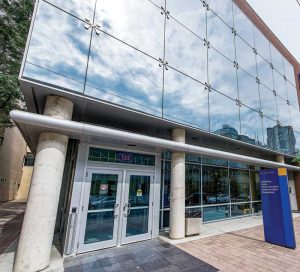 [5]
[5]Graphic Communications Management at Toronto Metropolitan University is the only four-year, degree-granting program for the printing industries in Canada.
Is there anything else you would like to say about your program?
NL: One interesting benefit of putting advanced printing technology in the hands of our students is, if there is a way to use a device that hasn’t been thought of yet, chances are our cohort of 200 eager students will come up with it.
More importantly, we couldn’t do our work without the support of this industry, and we hope Canadian print and packaging manufacturers would say the same about our grads. Bringing technology into the school is a really unique opportunity for brands to present it to North America’s future graphic communications managers. These are the same students we’re training to become leaders and key decision-makers in the future. It’s a textbook win-win.
Ginny Mumm is a freelance consultant for digital inkjet printer/cutter provider Roland DGA. For more information, visit www.rolanddga.com.
- [Image]: https://www.signmedia.ca/wp-content/uploads/2023/02/Toronto-Metropolitan_Logos-Printing-on-_Roland_DG_TrueVIS_VG3_.jpg
- [Image]: https://www.signmedia.ca/wp-content/uploads/2023/02/TM_TrueVIS_VG3_-Printing-Stickers.jpg
- [Image]: https://www.signmedia.ca/wp-content/uploads/2023/02/TM-Roland_DG_TrueVIS-VG3.jpg
- [Image]: https://www.signmedia.ca/wp-content/uploads/2023/02/Toronto-Metropolitan-_XL_Sticker-Sets.jpg
- [Image]: https://www.signmedia.ca/wp-content/uploads/2023/02/Toronto-Metropolitan-University_XL_Building_Exterior.jpg
Source URL: https://www.signmedia.ca/preparing-tomorrows-print-service-providers/